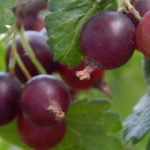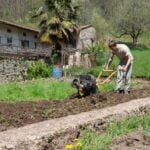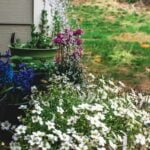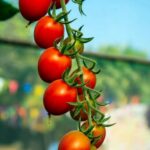Vegetable gardening without water is a concept that may seem impossible at first glance. After all, water is essential for the growth and development of plants, and traditionally, a significant amount of water is required to sustain vegetable gardens.
However, with sustainable practices and the right techniques, it is indeed possible to reduce water usage while still achieving bountiful harvests. In this article, we will explore the importance of water in vegetable gardening and delve into various strategies for conserving water in your garden.
Water plays a vital role in supporting plant growth and ensuring healthy vegetables. From germination to fruit production, plants rely on water for nutrient absorption, photosynthesis, and overall hydration. In a typical vegetable garden, significant amounts of water are necessary to keep plants thriving.
However, excessive irrigation can lead to wastage and contribute to environmental concerns such as water scarcity. By implementing sustainable practices and employing efficient watering techniques, gardeners can drastically reduce their reliance on water while maintaining productive gardens.
This article aims to provide insights into how you can conserve water in your vegetable garden without compromising plant health or yield. We will explore different approaches such as mulching, efficient irrigation methods, companion planting, drought-tolerant varieties, soil preparation techniques, and more.
By embracing these sustainable practices and making use of alternative water sources when necessary, you’ll discover that vegetable gardening without excessive reliance on traditional watering methods is not only feasible but also beneficial for both your garden and the environment. So let’s dive into the world of conserving water in vegetable gardening and learn how you can achieve remarkable results with minimal irrigation.
Sustainable Practices
In order to practice sustainable vegetable gardening, it is crucial to explore various methods of water conservation. By implementing these practices, gardeners can reduce their water usage while still cultivating thriving vegetable crops. Here are some sustainable practices that can be employed to conserve water in vegetable gardening:
- Mulching: One effective way to conserve water in vegetable gardens is through the use of mulch. Mulching helps retain soil moisture by reducing evaporation and suppressing weed growth. Organic mulches such as straw, bark chips, or compost can be spread around the base of plants to create a protective layer over the soil. This not only helps conserve water but also improves soil structure and fertility.
- Efficient Irrigation Methods: Another important aspect of water conservation in vegetable gardening involves using efficient irrigation methods. Drip irrigation systems are highly recommended in this regard as they deliver water directly to the plant roots, minimizing evaporation and runoff. Additionally, installing a rainwater harvesting system can help collect and store rainwater for later use in watering the garden.
- Companion Planting: Incorporating companion plants into the vegetable garden is not only useful for pest control and pollination but can also contribute to water conservation efforts. Some plants have deeper root systems that help draw up moisture from deeper layers of soil, making them excellent companions for thirstier vegetables. For example, planting drought-tolerant herbs like rosemary or lavender alongside vegetables can help reduce overall water needs.
By implementing these sustainable practices, gardeners can significantly reduce their water consumption while still producing bountiful vegetable harvests. In addition to saving resources, these methods also promote healthier soil and plants by providing optimal conditions for growth without excessive watering. It’s important for gardeners to experiment with different techniques and adapt them according to their specific growing conditions for maximum success in conserving water while maintaining productive vegetable gardens.
Drought-Tolerant Vegetables
In water-scarce environments, it is crucial to choose vegetable varieties that can thrive with minimal water. Drought-tolerant vegetables have certain characteristics that allow them to withstand prolonged periods without much rainfall or irrigation. By selecting these varieties, gardeners can ensure a successful vegetable harvest even in drought conditions.
When choosing drought-tolerant vegetables, it is important to look for certain characteristics. These include deep root systems, which allow plants to access moisture from lower soil layers during dry spells. Plants with smaller leaves also tend to lose less water through transpiration. Additionally, selecting vegetables that have adapted to arid climates or naturally require less water can greatly increase their chances of survival in water-scarce environments.
Some popular examples of drought-tolerant vegetables include tomatoes, peppers, and eggplants. These plants have developed mechanisms to conserve water and resist drought conditions. Other options include okra, kale, Swiss chard, and various types of beans.
To maximize the success of your vegetable garden in a water-scarce environment, consider incorporating a variety of drought-tolerant vegetables into your planting plan. By choosing wisely and understanding their specific needs, you can create a garden that will flourish even when water resources are limited.
Overall, by selecting drought-tolerant vegetable varieties and providing them with proper care and maintenance, gardeners can enjoy a bountiful harvest even in water-scarce environments. The next section will discuss the importance of soil preparation in creating optimal conditions for water retention in vegetable gardens.
Soil Preparation
One of the key factors in successful vegetable gardening without water is creating optimal conditions for water retention in the soil. Proper soil preparation plays a crucial role in improving moisture retention and reducing the need for frequent watering. By amending the soil with organic matter and employing other techniques, gardeners can create an environment that maximizes water utilization and supports healthy plant growth.
To enhance the ability of the soil to retain moisture, it is important to amend it with organic matter such as compost or well-rotted manure. Organic matter acts as a sponge, holding onto water and slowly releasing it to plant roots over time. This not only helps conserve water but also improves soil structure, nutrient availability, and overall plant health.
Additionally, incorporating organic matter into the soil increases its water-holding capacity by improving its ability to absorb and retain moisture. Soils with good structure are better at retaining both rainwater and irrigation water, reducing runoff and increasing infiltration. This means less water is wasted and more is available for plants to use.
In addition to using organic matter, proper soil preparation techniques can also aid in enhancing water retention. These techniques include creating raised beds or mounds, which help improve drainage while still allowing for water absorption by plant roots. The addition of a layer of mulch on top of the soil can further reduce evaporation and weed growth, helping to retain moisture within the root zone.
| Soil Preparation Techniques | Description |
|---|---|
| Amending Soil with Organic Matter | Add compost or well-rotted manure to improve moisture retention. |
| Raised Beds or Mounds | Create elevated planting areas to improve drainage and water absorption. |
| Mulching | Apply a layer of mulch on the soil surface to reduce evaporation and weed growth. |
By implementing these techniques, gardeners can create optimal conditions for water retention in the soil. This not only conserves water but also ensures that plants have access to the moisture they need for healthy growth. Proper soil preparation is an essential step towards vegetable gardening without water, as it sets the foundation for a sustainable and resilient garden in water-scarce environments.
Efficient Watering Techniques
When it comes to vegetable gardening without water, efficient watering techniques play a crucial role in maximizing water utilization. This section will explore various methods that can help vegetable gardeners optimize their water usage while ensuring the plants receive the necessary moisture to thrive.
One effective technique is the use of drip irrigation systems. Drip irrigation involves delivering water directly to the roots of plants through a system of tubes with small holes or emitters. This method is known for its efficiency as it minimizes water waste by delivering water precisely where it is needed. Moreover, drip irrigation can also reduce weed growth and disease spread, as the leaves and surrounding soil remain dry during watering.
Another useful approach to maximize water utilization is through self-watering containers. These containers have built-in reservoirs that store excess water, which is then drawn up by the plants as needed. Self-watering containers provide consistent moisture levels while reducing evaporation and runoff. They are particularly handy for small vegetable gardens or urban settings where space is limited.
Additionally, implementing a watering schedule based on plant needs, weather conditions, and soil moisture levels can greatly conserve water. By monitoring these factors, gardeners can avoid overwatering or underwatering their vegetables. Watering deeply but infrequently encourages plants to develop deep root systems, allowing them to access stored moisture in the soil more effectively.
| Technique | Description |
|---|---|
| Drip Irrigation Systems | A method of delivering water directly to plant roots through tubes with small holes or emitters. |
| Self-Watering Containers | Containers with built-in reservoirs that store excess water for plants to draw up as needed. Ideal for small gardens or urban settings. |
Implementing efficient watering techniques not only conserves water but also promotes healthier plant growth. By maximizing water utilization, vegetable gardeners can cultivate thriving produce while minimizing their environmental impact.
Mulching
Mulching is a highly effective technique in vegetable gardening that helps retain moisture in the soil and reduce water loss through evaporation. By adding a layer of mulch to your garden, you can create a protective barrier that conserves moisture, regulates soil temperature, suppresses weed growth, and improves overall plant health. In this section, we will explore the benefits of mulching in vegetable gardens and discuss different types of mulch and how to apply them effectively.
Benefits of Mulching
Mulching offers numerous benefits for vegetable gardens, particularly in water conservation. One of the key advantages is its ability to prevent evaporation by reducing direct contact between the soil and air. A layer of mulch acts as a shield, slowing down water evaporation from the surface while allowing it to gradually penetrate into the soil. This helps maintain soil moisture levels and reduces the frequency of watering needed.
In addition to retaining moisture, mulch also plays a crucial role in regulating soil temperature. It acts as an insulating layer, protecting plant roots from extreme heat during hot summer days and preventing them from freezing during colder seasons. Furthermore, mulch suppresses weed growth by blocking sunlight that weeds need to germinate and thrive. This not only reduces competition for water but also minimizes the need for manual weeding.
Types of Mulch and Application Techniques
There are several types of mulch available for vegetable gardening, each with its own unique characteristics and advantages. Organic mulches such as straw, hay, grass clippings, composted leaves, or wood chips are commonly used due to their ability to decompose over time and improve soil fertility. Inorganic options like plastic sheets or landscape fabric can also be used but may not provide the same benefits for soil health.
When applying mulch in your vegetable garden, make sure to prepare the soil beforehand by clearing away any debris or weeds. Apply a layer of mulch about 2-4 inches thick, ensuring it covers the soil completely around plants while leaving space around the base of stems to prevent moisture buildup and potential rot. It’s also important to regularly monitor the moisture levels in your garden and adjust watering accordingly since mulch can retain moisture for longer periods.
Smart Gardening Practices
Watering practices play a crucial role in the success of vegetable gardening, particularly in water-scarce environments. By adopting smart watering practices, gardeners can ensure that their plants receive adequate moisture while maximizing water utilization. This section will delve into the importance of timing and frequency in watering vegetables and provide tips on how to optimize watering for healthy plant growth.
One key aspect of smart watering is understanding the specific water needs of different vegetable varieties. It’s essential to research each plant’s requirements, as some may need more frequent watering while others may require less. Consider factors such as the stage of growth, weather conditions, and soil moisture levels before deciding when and how much to water.
In general, it is recommended to water deeply but infrequently. This encourages deep root growth, helping plants become more resilient to drought conditions. Shallow and frequent watering can lead to surface roots that are more susceptible to drying out quickly. To promote deep root growth, water should penetrate at least six inches into the soil each time you irrigate.
Creating a watering schedule can also be beneficial in optimizing timing and frequency. Ideally, it’s best to water early in the morning or late in the evening when evaporation rates are lower. This allows plants to absorb moisture efficiently without excessive loss due to heat or sunlight. Additionally, monitoring soil moisture levels regularly will help determine when plants require watering.
By embracing smart gardening practices like timing and frequency of watering, vegetable gardeners can conserve water while ensuring optimal plant health. Implementing these techniques alongside other sustainable practices discussed earlier in this article will contribute towards a successful vegetable garden even with limited water resources available.
Alternative Water Sources
In regions where water scarcity is a concern, vegetable gardeners may need to explore alternative water sources to sustain their plants. Relying solely on traditional water supplies such as municipal water can be unsustainable and costly. However, there are several innovative methods that gardeners can consider to provide water for their plantings.
Rainwater Harvesting
One option for sourcing water in a water-scarce environment is rainwater harvesting. This method involves collecting and storing rainwater from rooftops or other surfaces for later use in the garden. Rain barrels, cisterns, or even simple buckets can be used to collect the rainwater. The collected water can then be utilized during dry periods when rainfall is scarce.
When implementing a rainwater harvesting system, it is important to ensure that clean and suitable containers are used for storage. Additionally, an appropriate filtration system should be employed to remove any impurities from the collected rainwater before it is used for irrigation.
Greywater Usage
Another alternative water source that gardeners can consider is greywater usage. Greywater refers to wastewater generated from household activities such as dishwashing, laundry, or bathing that does not contain human waste. Instead of letting this water go down the drain, it can be diverted and reused for watering vegetable plants.
Before using greywater in the vegetable garden, it is crucial to take certain precautions. First, greywater should not come into direct contact with edible portions of vegetables to avoid contamination. It should also not be stored for long periods as it may become stagnant and promote bacterial growth. Finally, soaps and detergents used in household activities should be free of harmful chemicals or artificial additives that could harm the plants.
Other Innovative Methods
In addition to rainwater harvesting and greywater usage, there are other innovative methods that can provide alternative water sources for vegetable gardens. One such method is using air conditioning condensate, which can be collected and utilized for irrigation purposes. Air conditioning units produce a significant amount of condensation that would otherwise be wasted. By capturing and reusing this water, gardeners can reduce their reliance on traditional water supplies.
Furthermore, some gardeners have started exploring aquaponics systems, which integrate fish farming with hydroponic vegetable growing. In these systems, the nutrient-rich wastewater generated by the fish is used to irrigate and fertilize the plants. This closed-loop system minimizes water waste and maximizes its utilization in both fish and vegetable production.
Conclusion
In conclusion, vegetable gardening in a water-scarce environment is not only possible but also sustainable with the implementation of various practices and strategies. Throughout this article, we have explored the importance of water in vegetable gardening and discussed ways to conserve and optimize its usage.
By adopting sustainable practices such as mulching, efficient irrigation methods, and companion planting, gardeners can significantly reduce water usage while still supporting healthy plant growth. Additionally, selecting drought-tolerant vegetable varieties that are more resilient to water scarcity can be a wise choice for those facing limited water resources.
Soil preparation is another crucial aspect when it comes to water retention. Enhancing the soil’s ability to retain moisture through techniques like amending with organic matter can help ensure that plants receive the necessary water without wastage.
Efficient watering techniques such as drip irrigation systems and self-watering containers can further maximize water utilization in vegetable gardens. Furthermore, utilizing mulching methods can help retain soil moisture by reducing evaporation and weed growth.
Smart gardening practices involve watering plants based on their specific needs, monitoring weather conditions, and checking soil moisture levels. By watering deeply but infrequently, gardeners encourage deep root growth and minimize water loss.
Lastly, it is important to consider alternative water sources when traditional supplies are scarce or restricted. Harvesting rainwater or using greywater are innovative methods that can sustain vegetable gardens even during periods of drought.
Frequently Asked Questions
What vegetables can grow without water?
While it is impossible for vegetables to grow entirely without water, there are certain vegetables that are more drought-tolerant than others and require less water to thrive. Some examples of vegetables that can withstand dry conditions include tomatoes, peppers, eggplants, zucchini, summer squash, and leafy greens like kale and Swiss chard.
These vegetables have adapted mechanisms that allow them to survive with minimal watering, such as deep root systems or waxy leaves that help retain moisture.
How long can vegetable garden go without water?
The length of time a vegetable garden can go without water depends on various factors such as the specific vegetables being grown, the weather conditions, soil quality, and previous watering practices. In general, most vegetable gardens require regular watering to ensure optimal growth and productivity.
However, established vegetable plants with well-developed root systems may be able to withstand short periods of drought without severe damage or reduced yields. Typically, it is recommended not to let a vegetable garden go without water for more than a week if possible.
How can I grow my garden without water?
Growing a garden without water entirely is not feasible since water is essential for plant survival and growth. However, there are several strategies you can employ to minimize water usage in your garden and make it more drought-resistant. One approach is selecting drought-tolerant plants that require less frequent watering.
Improving soil health by adding organic matter such as compost can also enhance its ability to retain moisture. Implementing mulching techniques around your plants helps reduce evaporation from the soil surface and preserves moisture levels in the root zone. Additionally, practicing proper irrigation methods like deep watering directly at the base of plants rather than overhead sprinkling can optimize water absorption while minimizing waste through evaporation.

If you’re looking to get into vegetable gardening, or are just looking for some tips on how to make your current garden better, then you’ve come to the right place! My name is Ethel and I have been gardening for years. In this blog, I’m going to share with you some of my best tips on how to create a successful vegetable garden.





